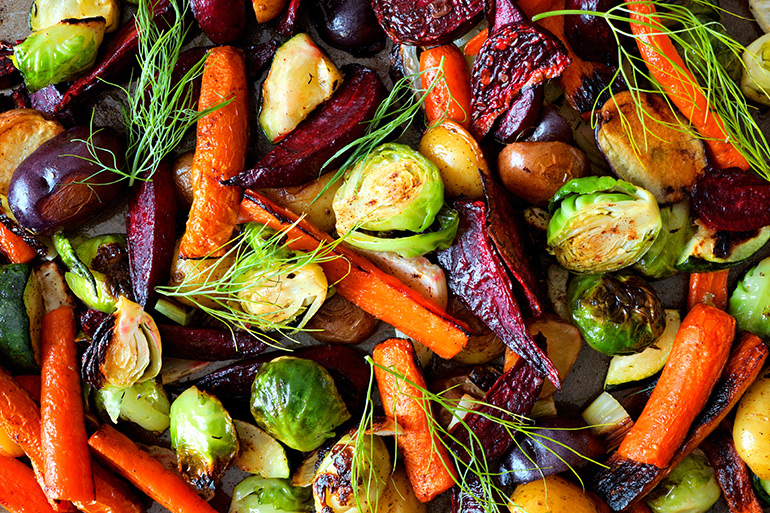Hamptons Epicure: A Winter's Tale of Community-Supported Agriculture

Writing a regional cookbook makes you think hard about what’s-in-season-when. After eight years working at the Sag Harbor Farmers Market I thought I had it down. I’d even taken notes and photos, but nature always has some surprises in store.
My family joined the winter share program at Quail Hill Farm in Amagansett this year for the first time. It begins in mid-November. So it’s the lesser-known sister of their popular summer C.S.A. (Community Supported Agriculture), aka “the pretty one.” Quail Hill in summer is all about organic tomatoes and peppers and other brightly colored things.
For our winter share, we show up at their workshop every other Saturday with well-worn tote bags in hand. There’s a big chalkboard set up along one wall that lists that week’s produce selection and how much of each fruit or vegetable each shareholder is to take.
The selection and amounts vary somewhat, but it’s always a lot of food and generally includes a mix of beets, carrots, dried beans, dried peppers, garlic, greens like collards or kale, leeks, onions, parsnips, potatoes, rutabaga, sage, squash, sweet potatoes, turnips and wheat berries, as well as fresh-cut tender greens and herbs from the nearby greenhouse. You take your own scissors and head to the greenhouse to trim out your share. The greenhouse is located down the hill, next to a very active chicken coop.
Though they grow here year-round, kales are much tastier after a hard frost, like all of the cruciferous vegetables are. Crucifers include: arugula, bok choy, broccoli, Brussels sprouts, cabbage, cauliflower, chards, kale, radish, rapini, rutabaga, spinach, turnip and watercress. Also, root vegetables, including beets, carrots, onions, parsnips and leeks, are sweeter after a hard frost because, in order to survive in the cold (to not freeze), some of their starches turn to sugars.
With our first pick-up I made up a wheat berry-vegetable soup recipe. Our second pick-up led to the delicious development of a black bean soup, heavy with those sweet carrots.
Quail Hill is a very special place—and very productive. Its C.S.A. is the oldest in New York State. Farmers and volunteers work 35 acres, growing more than 500 varieties of vegetables, herbs and flowers to supply over 250 families. The farm also sells at area farmers markets and directly to restaurants, and it donates produce to local food pantries.
Farmer, poet and pioneer of the community farming movement, Quail Hill’s Scott Chaskey oversees an advanced apprenticeship program. Over 90% of the farmers he and his team have mentored in the past six years are currently working in farming or elsewhere in the food system. That’s an impressive number in our modern world where less than 2% of Americans are employed in agriculture. Founded as an agrarian society, our path has strayed toward Big Ag subsidized by our government and propelled by fossil fuel.
As a part of the Peconic Land Trust, Quail Hill offers educational programs and works to continue providing a refuge to wildlife, like the nine-spotted ladybug, eastern bluebirds and monarch butterflies.
This whole scene takes me back to my rural roots, but mainly to roots. So many root vegetables. One begins to view any food not fully encrusted in dirt, such as squash or Brussels sprouts, as quite exotic. But it’s all good. What surprised me most was how well these vegetables keep in a cool, dark place like my home’s foyer. This is how our ancestors survived winter in the Hamptons—deliciously.
You can follow Stacy’s informed and opinionated foodie adventures on Twitter @hamptonsepicure. Her cookbook, co-written with Hillary Davis, is due out in 2020.



